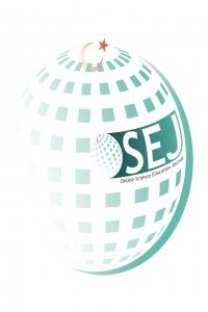Step-by-Step Argument Map in Learning Environment: Example of Optic
Argumentation, argument mapping, science teaching
___
- Davies, W. (2009). Computer-assisted argument mapping: a rationale approach. High Education(58), 799-820.
- Garcia-Mila, M., & Andersen, C. (2007). Cognitive foundations of leaning argumentation. Argumentation in Science Education (s. 34). Springer.
- Harrel, M. (2007). Using Argument Diagramming Software to Teach. Dietrich College of Humanities and Social Sciences.
- Osborne, J., Erduran, S., & Simon, S. (2004). Enhancing the quality of argumentation in school science . Journal Of research İn Science Teaching , 41(10), 994-1026.
- Pashler, H. (2011). Argument mapping. Thousand Oaks, CA: Sage.
- Sampson, V., & Gleim, L. (2009). Argument-driven ınquiry to promote the understanding of important concept &practises in biology. The American Biology Teacher, 71(8), 465-
- ter Berg, T., & van der Brugge, E. (2013). Teaching critical thinking with rationale. 7th International Technology, Education and Development Conference. Valencia, Spain.
- Twardy, C. (2004). Argument maps improve critical thinking. Teaching Philosophy, 27(2), 95-116.
- van Gelder, T. (2002). Argument mapping with Reasonable. APA Newsletter: Philosophy & Computers, 2(1), 85-90.
- van Gelder, T. (2007). The rationale for RationaleTM. Law, Probability and Risk, 1-20. doi:doi:10.1093/lpr/mgm032.
- van Gelder, T. (2009, February 17). What is argument mapping? November 2, 2018 in received.
- Yayın Aralığı: Yılda 2 Sayı
- Yayıncı: Mehmet ALTAN KURNAZ
Funda Hasançebi, Serkan Kartal
Hacer Gül YALÇIN, Ebru EZBERCİ ÇEVİK, Hasan KAYA
Investigation of Prospective Science Teachers' Learning Approaches in Terms of Different Variables
Bircan ÜNLÜ, Ebru EZBERCİ ÇEVİK, Mehmet Altan KURNAZ
Step-by-Step Argument Map in Learning Environment: Example of Optic
